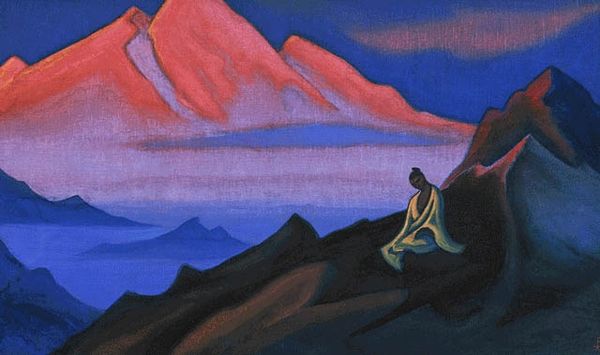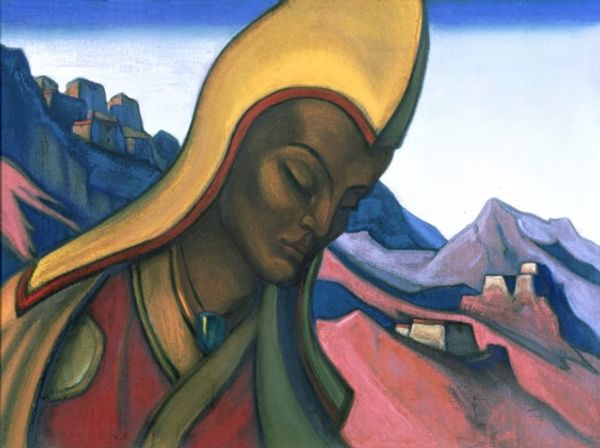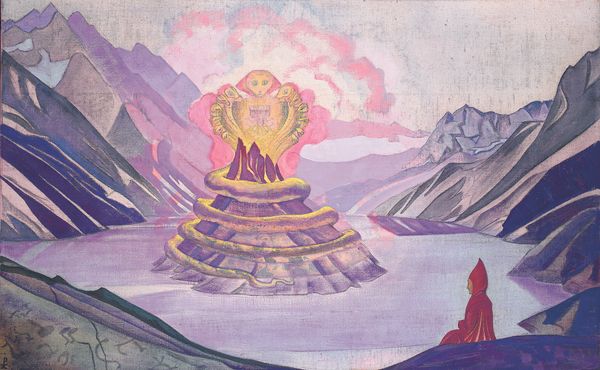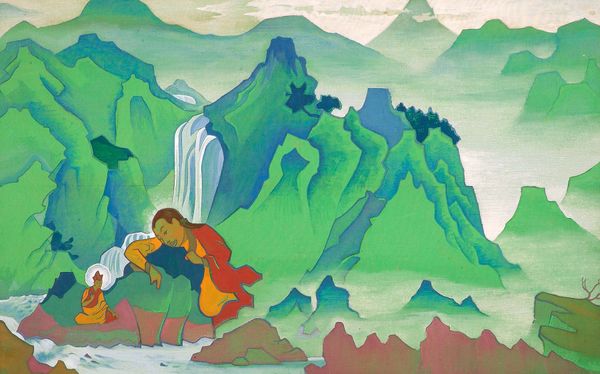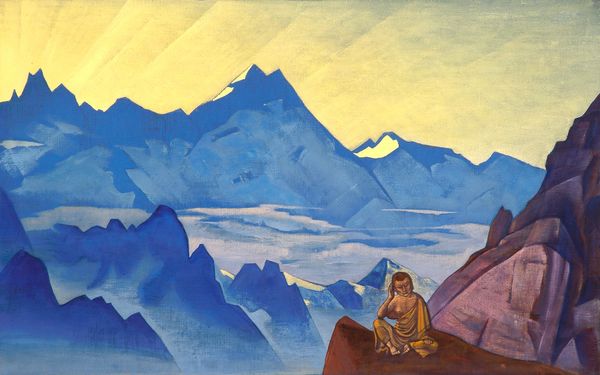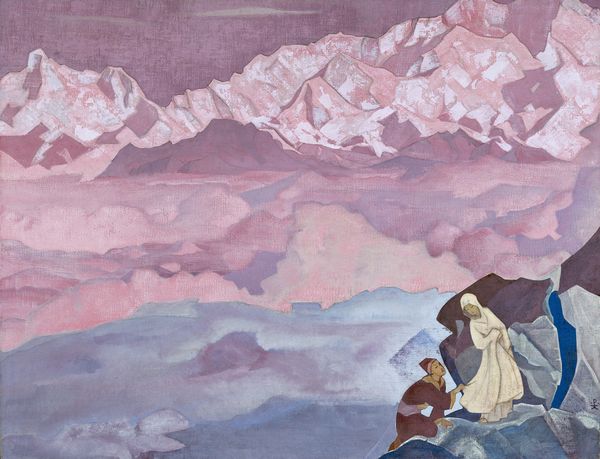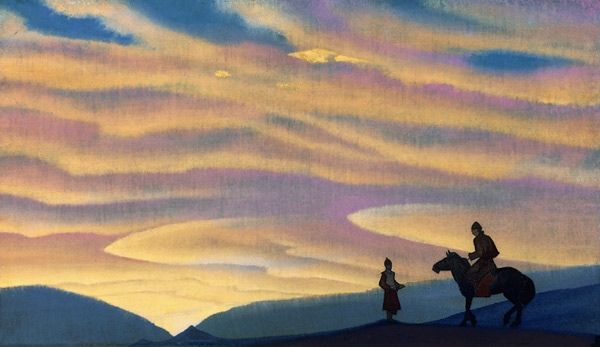
Copyright: Public domain
Curator: Let’s take a look at Nicholas Roerich's "Blessed Soul (Bhagavan Sri Ramakrishna)," painted in 1924. It is a landscape format that features the subject placed on a mountainous scene. Editor: The colour palette strikes me first; those deep blues and purples create such a surreal, dreamlike atmosphere. Curator: Roerich’s material choices were key to this effect. He worked primarily with tempera on canvas for most of his landscapes, a medium which dries quickly. It enables layers, yet maintains opacity that influences his rendering of light. Consider also his interest in scenography; many critics have identified the techniques utilized to stage a character to meet the background scenery. Editor: Absolutely, Roerich wasn’t just painting a portrait; he was constructing a visual narrative around spiritual figures. It makes you think about orientalism and the West’s fascination with Eastern mysticism and gurus, like Ramakrishna. The painting itself becomes a site where those cross-cultural interpretations play out. I am especially interested on how gender performs into orientalism through the Western gaze. Curator: Right. Ramakrishna was a pretty controversial figure in his time, with critiques toward his lifestyle choices and performative acts of faith. I'd be really interested to explore how Roerich's materials both highlight and potentially sanitize that complexity for a Western audience. His careful handling of color, those blues you mentioned earlier for example, feels intentionally reverent. Editor: This painting becomes part of a longer, complex dialogue on faith, cultural representation, and gender performance— all embedded in the artistic labor itself, and what kind of work went into it. What about the cultural exchange that went into acquiring the material elements that conforms the work? How might those elements have social lives tied to colonial routes of extractivism? Curator: Food for thought about artistic and spiritual creation— and, equally important, the art world’s infrastructures for circulating its commodity-objects. Editor: Indeed, art making as a process laden with so much social context! Curator: I agree! Now if we explore the exhibition of the artwork...
Comments
No comments
Be the first to comment and join the conversation on the ultimate creative platform.

